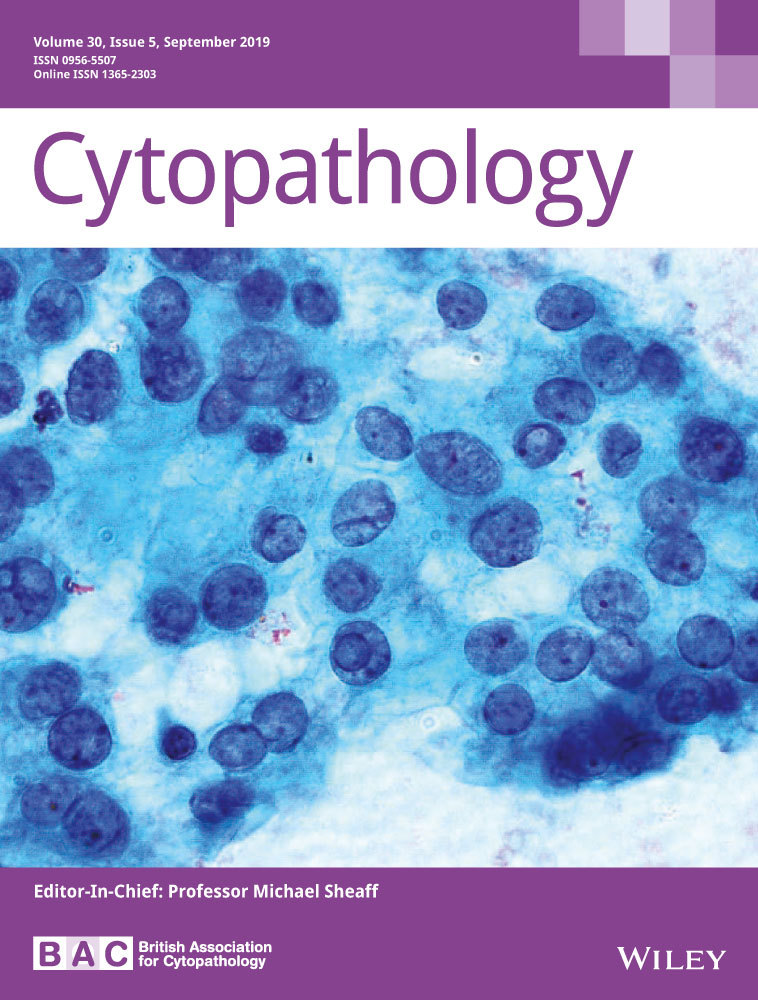Diagnosing synovial sarcoma by fine-needle aspiration cytology and molecular techniques
Abstract
Objective
Synovial sarcomas (SS) are rare soft tissue tumours defined by the SYT-SSX fusion gene. The tumours are composed of mesenchymal cells with varying degrees of epithelial differentiation. Cytomorphological descriptive studies are limited to small series and single cases. In this study we systematically examined the cytological features of SS diagnosed at our institution.
Methods
SS diagnosed by fine-needle aspiration (FNA) cytology at our institution between 2006 and 2018 were reviewed by a panel of senior cytopathologists. Clinical and cytopathological characteristics were categorised and described.
Results
A total of 38 SS FNAs were identified from 35 patients. The cytomorphology was uniform, presenting as highly cellular smears of clusters and individual cells with mixed round, oval and spindle cells. We frequently observed pericapillary arrangement and occasionally pink background stroma was seen. Glandular formation or epithelial components were identified in the majority of cases which on histology were subtyped as biphasic SS. Pleomorphism and mitoses were rare. Immunocytochemical analysis was frequently positive for vimentin, epithelial membrane antigen, Bcl2 and, in recent cases, TLE1. Pan-cytokeratins and CK7 could occasionally be positive in biphasic cases. The diagnostic SYT-SSX fusion gene was detected in all FNA specimens using polymerase chain reaction or fluorescence in situ hybridisation.
Conclusions
SS have distinct and uniform cytopathological features. Molecular genetic analysis for SYT-SSX are invaluable for diagnosing SS with FNA and should be implemented in cytopathological laboratories that routinely perform soft tissue diagnostics.
Abstract
Synovial sarcomas are rare soft tissue tumors defined by the SYT-SSX fusion gene. In this study, we demonstrate that synovial sarcomas have distinct and homogenous cytopathologic features. Molecular genetic analysis for SYT-SSX are invaluable for diagnosing SS with FNA and should be implemented in cytopathological laboratories which routinely perform soft tissue diagnostics.
CONFLICTS OF INTEREST
The authors have no conflicts of interest to declare.




